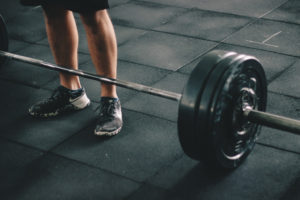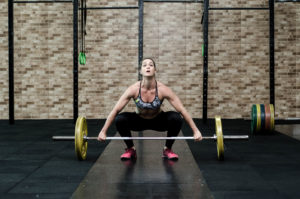People are becoming increasingly aware that strength training is essential to individuals of all ages to maintain overall health and improve physical performance.
We know that strength training improves mental and physical health in adults, and recently, a growing body of scholarly evidence has studied and confirmed the benefits of strength training in children and adolescents as well.
One of the most basic and fundamental exercises in strength training…
Is the deadlift. Due to its basic simplicity and crucial function, the deadlift is essential to developing short- or long-term strength progressions. Many trainers believe it should be emphasized and prioritized in any strength-training regimen.
The deadlift not only improves performance but also
…enhances resiliency
…strengthens the core
…and stabilizes the trunk while using the lower extremities to exert great force.
This powerfully strengthens trunk muscles, and enhances overall strength since the entire body must be engaged to properly perform this exercise. In fact, very few exercises achieve this level of trunk stability, making the deadlift a foundational move in any regimen.
The deadlift simultaneously activates a large quantity of motor units and muscle fibers, develops coordination in the musculoskeletal system, and encourages long-term resistance and adaptation. It is the base from which all other ground-based lifts develop, such as cleans and snatches, and its proper execution benefits individuals in all aspects of daily life – even aiding in the prevention of muscle strain and back injury.
Research has consistently demonstrated that…
Correct Performance of Such Key
Strength-Building Exercises As Deadlifts Among Teen Athletes
Promotes a Series of Health Benefits.
These include:
- Increased muscle mass and resting metabolic rate
- Reduction in low back pain
- Increases in bone density
**Long-term studies have also demonstrated that these health benefits typically last well into the adult years.
 One trial study, published in Sports Health, explored these benefits in pre-pubescent children. The children underwent an 8 to 12-week program of well-designed and properly supervised strength training, emphasizing basic lifts such as the deadlift and its variations. Their physical strength showed improvement by 30 to 50 percent. Teens showed similar improvements, though it was found that they had to continue training at least twice weekly to maintain their strength gains. While the rate of injuries resulting directly from weightlifting exercises, including lower back injuries, were low, those that did occur were primarily due to incorrect use of equipment, lifting improper or incorrect amounts of weight, sloppy technique, or absence of a qualified and trained adult supervisor or coach.
One trial study, published in Sports Health, explored these benefits in pre-pubescent children. The children underwent an 8 to 12-week program of well-designed and properly supervised strength training, emphasizing basic lifts such as the deadlift and its variations. Their physical strength showed improvement by 30 to 50 percent. Teens showed similar improvements, though it was found that they had to continue training at least twice weekly to maintain their strength gains. While the rate of injuries resulting directly from weightlifting exercises, including lower back injuries, were low, those that did occur were primarily due to incorrect use of equipment, lifting improper or incorrect amounts of weight, sloppy technique, or absence of a qualified and trained adult supervisor or coach.
Overall good health, muscular fitness, and core strength are not the only functions strength training programs focused on the deadlift can provide. In fact, fundamental exercises like the deadlift are key to overall athletic performance – and play an important role in long-term athletic development, or LATD.
So, muscular fitness and strength acquired through weightlifting – and particularly focusing on basic lifts such as the deadlift and its many variations – benefits youth athletes in many ways.
 First, this type of strength training enhances and optimizes their long-term athletic development and career options; second, it prepares them for the demands of long-term training and competition; and third, it promotes long-term health benefits that continue over time and extend into adulthood.
First, this type of strength training enhances and optimizes their long-term athletic development and career options; second, it prepares them for the demands of long-term training and competition; and third, it promotes long-term health benefits that continue over time and extend into adulthood.
With proper supervision, weightlifting and strength training can benefit a youth athlete no matter what sport they wish to pursue. While the physical health benefits are in themselves well-known and prevalent, training has also been shown to provide psychological benefits – including improvements in self-confidence and social adaptability.
In fact, it was found that overweight and obese teens may find resistance training easier to manage than aerobic exercises. Participation in resistance training may not only help them develop healthier muscle mass, but may also develop long-term participation in physical activity and enjoyment of exercise in general. Many treatment programs for obese and overweight youth are now encouraged to focus more on resistance exercises such as weightlifting.
If you’re a parent or coach of youth athletes, then safe, effective training is important to you. The good news is there’s a new training tool perfect for doing the deadlift that helps protect the spine and promote proper form. It’s called the “The T-Bell,” and it’s perfect for youth athletes or anyone who wants to safely enjoy the benefits of weightlifting, build greater strength, and master the deadlift. [Click here for more information].
Robert Acuña Jr. is a Former 3 Time All-Conference College Offensive Lineman, Former All-Region College Offensive Lineman, Former Junior High & High School Coach and Creator of nextlevel.training
Falk B, Tenenbaum G: The effectiveness of resistance training in children: A meta-analysis. Sports Med 22: 176-186, 1996.
Wenning, Matthew, MS, The Deadlift and Its Application to Overall Performance. The Journal of Strength and Conditioning Research. 26(3): 867-872, 2012.
Lloyd, R, Cronin, J, Faigenbaum, A, Haff, G, Howard, R, Kraemer, W, Micheli, L, Myer, G, and Oliver, J. National Strength and Conditioning Association Position Statement on Long-Term Athletic Development. The Journal of Strength and Conditioning Research 30(6): 1491-1509, 2016.
Almstedt, HC, Canepa, JA, Ramirez, DA, and Shoepe, TC. Changes in bone mineral density in response to 24 weeks of resistance training in college-age men and women. The Journal of Strength and Conditioning Research 25(4): 1098-1103, 2011.
Stabenow Sahab, Katherine, MD, and Metcalf McCambridge, Teri, MD, FAAP, Strength Training in Children and Adolescents. Sports Health. 2009 May; 1(3): 223–226.
Granacher U, Lesinski M, Büsch D, Muehlbauer T, Prieske O, Puta C, Gollhofer A and Behm DG (2016) Effects of Resistance Training in Youth Athletes on Muscular Fitness and Athletic Performance: A Conceptual Model for Long-Term Athlete Development. Front. Physiol. 7: 164.
Gill A. Ten Hoora,b *, Guy Plasquia , Robert A.C. Ruiterb , Stef P.J. Kremersc , Geert M. Ruttenc , Annemie M.W.J. Scholsd and Gerjo Kokb. A new direction in psychology and health: Resistance exercise training for obese children and adolescents. Psychology & Health, 2016 Vol. 31, No. 1, 1–8.

1 thought on “The Deadlift: An Essential Exercise for Youth Athletes”
Comments are closed.